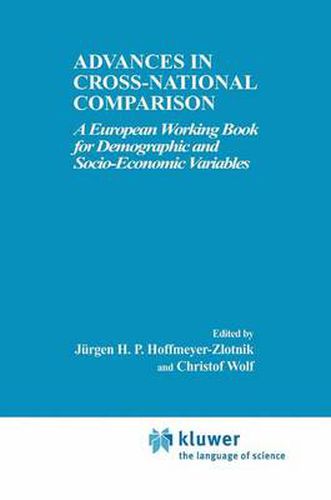Readings Newsletter
Become a Readings Member to make your shopping experience even easier.
Sign in or sign up for free!
You’re not far away from qualifying for FREE standard shipping within Australia
You’ve qualified for FREE standard shipping within Australia
The cart is loading…






This title is printed to order. This book may have been self-published. If so, we cannot guarantee the quality of the content. In the main most books will have gone through the editing process however some may not. We therefore suggest that you be aware of this before ordering this book. If in doubt check either the author or publisher’s details as we are unable to accept any returns unless they are faulty. Please contact us if you have any questions.
The book consists of five parts and a concluding chapter. Part 1 covers general problems and presents solutions for the harmonisation of data from different national and/or cultural contexts. In the second part EUROSTAT and ESOMAR present their established standard instruments. Tested instruments each covering one variable (i.e. occupation, education) are presented in the third part. The fourth part again includes suggested tools for the harmonisation of single variables for which standardised instruments are not yet available (i.e. age, religion, ethnicity, household, family, income). The last part presents selected empirical analyses demonstrating the use and fruitfulness of instruments presented before.
This book is mainly written for two groups. First, researchers and practitioners involved in comparative research in Europe. Second, researchers working with data of the statistical offices of European countries and data from institutions of the European Union.
$9.00 standard shipping within Australia
FREE standard shipping within Australia for orders over $100.00
Express & International shipping calculated at checkout
This title is printed to order. This book may have been self-published. If so, we cannot guarantee the quality of the content. In the main most books will have gone through the editing process however some may not. We therefore suggest that you be aware of this before ordering this book. If in doubt check either the author or publisher’s details as we are unable to accept any returns unless they are faulty. Please contact us if you have any questions.
The book consists of five parts and a concluding chapter. Part 1 covers general problems and presents solutions for the harmonisation of data from different national and/or cultural contexts. In the second part EUROSTAT and ESOMAR present their established standard instruments. Tested instruments each covering one variable (i.e. occupation, education) are presented in the third part. The fourth part again includes suggested tools for the harmonisation of single variables for which standardised instruments are not yet available (i.e. age, religion, ethnicity, household, family, income). The last part presents selected empirical analyses demonstrating the use and fruitfulness of instruments presented before.
This book is mainly written for two groups. First, researchers and practitioners involved in comparative research in Europe. Second, researchers working with data of the statistical offices of European countries and data from institutions of the European Union.